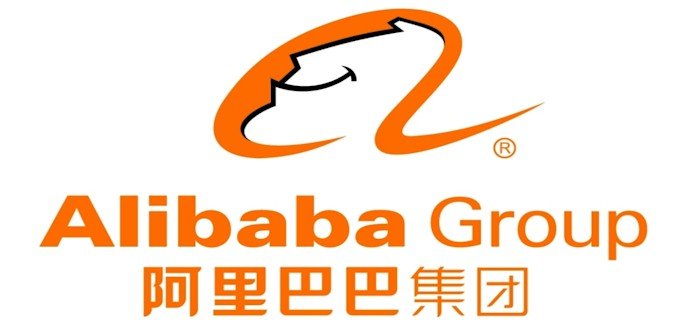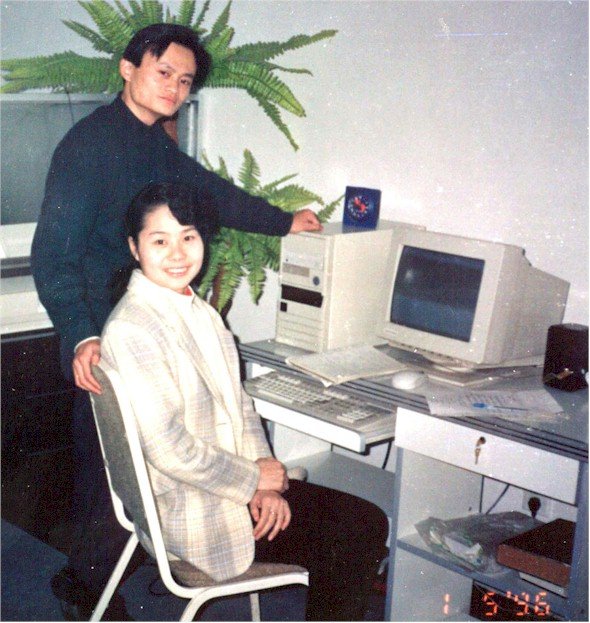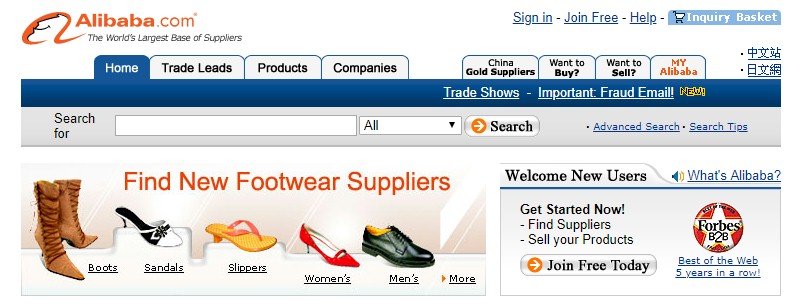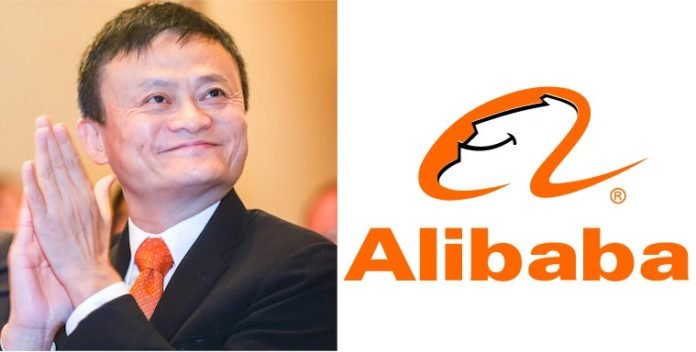This is a look at the Alibaba Logo and the History of the business.

The Alibaba logo is in all-orange, except for the outline of the face in the emblem, which is in black. The color is known as the most visible in the dark and against water. In particular, this applies to the shade known as “safety orange,” which closely matches the shade used by Alibaba.
Alibaba is the largest e-commerce company on the planet, with close to 700 million active users across its internet properties—mainly Alibaba.com, Tmall, Aliexpress, and Taobao. Over the last decade, the Alibaba conglomerate has also managed to establish a strong presence in a number of key internet sectors, including cloud services, artificial intelligence, and e-commerce payment services.
Now just over 20 years after its inception in Hangzhou, China, the company has surpassed the combined market value of e-commerce giants Amazon and eBay. This actually happened in 2014 when its colossal IPO led to a valuation of $231 billion. And with a string of large acquisitions since then, the Alibaba group has crossed the $500 billion valuation mark, making it the second Asian company to achieve this feat.
The Alibaba Group has also made its presence felt in the investment sector. The Indian investment market has been a top beneficiary in particular, with nearly $2 billion invested in Indian startups since 2014.
History of the Alibaba Group

The history of Alibaba begins in December 1999, when Jack Ma brought together and led a group of 18 tech pioneers to help work on his vision. After having observed the huge gaps in China’s internet e-commerce space, the group started working on their vision of an online marketplace that could serve the entirety of China’s internet users in the most efficient way possible.
Like Apple co-founders Steve Jobs and Steve Wozniack, the Alibaba founders group started from humble beginnings—a small apartment in China’s city of Hangzhou. Ma, having lived in the U.S. when the e-commerce space was beginning to boom, came back to China inspired with a vision of setting up a similar kind of business in China.
Ma’s early career ambitions were quite different, though. Born September 10, 1964, in Hangzhou, Ma wanted to teach English. The demand for English language lessons amongst China’s capitalistic middle class had taken off by the late ’80s, making it a great career opportunity.
Ma eventually landed a teaching gig, but it wasn’t long before he switched to a career in the business world. And again, before long, he traveled to the U.S. with the goal of enrolling at Havard University, having been overlooked for a manager’s position at a KFC in China.
Ma’s Havard ambitions got derailed when he started using the internet. He noticed that in comparison to America’s burgeoning e-commerce industry, there were virtually no companies in China engaging in the same. Soon after, he started a website focusing on e-commerce for China.
Ma’s efforts soon attracted the attention of a few Chinese investors, who shared his vision of an e-commerce company based in the Far East. Ma also went on to start another company, which he named China Pages. Within a space of three years, the company had managed to reach a $1 million valuation.
With China Pages, Ma’s vision of a B2B online marketplace for China had begun to took shape. He approached a number of different investors with the idea, and was able to secure about $35 million in venture funding for his proposed new venture, Alibaba. In late 1999, Ma and his partners launched Alibaba, just as the new millennium was about to roll in.
With China Pages, Ma’s vision of a B2B online marketplace for China had begun to take shape. He approached a number of different investors with the idea and was able to secure about $35 million in venture funding for his proposed new venture, Alibaba. In late 1999, Ma and his partners launched Alibaba, just as the new millennium was about to roll in.
Shifting into Higher Gear
Alibaba’s timing was great. By the beginning of the 21st century, the concept of online shopping had gained widespread appeal among consumers. China’s large population also translated to a fairly large number of internet users, which boded well for Alibaba.
China’s hundreds of millions of consumers had been waiting for a solution like Amazon or eBay, both of which were already thriving in America. The country’s transition from a communist system to capitalism gave rise to a massive consumer market. Many consumers now had decent jobs and money to spend, making this the ideal landing spot for Alibaba.
 Soon after its launch, Alibaba was able to secure additional venture funding, which was used to roll out new websites. Key among those was Taobao, a consumer-to-consumer marketplace similar to eBay. Soon thereafter came Aliwangwang, an instant-messaging app that helped consumers find and shop for the best deals online. And then came AliPay, an online payment platform like PayPal. With this set of powerful platforms, Alibaba was now poised to rule the Asian e-commerce space.
Soon after its launch, Alibaba was able to secure additional venture funding, which was used to roll out new websites. Key among those was Taobao, a consumer-to-consumer marketplace similar to eBay. Soon thereafter came Aliwangwang, an instant-messaging app that helped consumers find and shop for the best deals online. And then came AliPay, an online payment platform like PayPal. With this set of powerful platforms, Alibaba was now poised to rule the Asian e-commerce space.
During its first decade in business, the company attracted quite unexpected business partners – the Government of China. Having grown suspicious of foreign business investors, the government rolled out a strict internet control campaign. These efforts locked out such global giants as Amazon and eBay from the Chinese market, leaving the arena free for Alibaba to conquer.
In 2005, the Chinese government-sanctioned a partnership between Alibaba and U.S. tech giant Yahoo.com, with Alibaba set to run the latter’s business operations in China. By this time, Alibaba had established itself as the market leader in the Asian e-commerce marketplace and has maintained its grip since then.
The year 2014 was a defining time in the company’s history when its $25 billion IPO shook Wallstreet. The IPO led to a massive $231 billion valuation and established Alibaba as the largest e-commerce company ahead of Amazon, Walmart, and eBay.
Alibaba Group Timeline
1999: Jack Ma and his 18 partners start the company in Hangzhou, China.
2000: Alibaba secures $25 million in funding from Softbank, Goldman Sachs, and other investors.
2002: The company turns its first-ever profits.
2004: The company launches Taobao, a consumer-to-consumer e-commerce website, and then Alipay, an online payments platform.
2007: The company gets listed on the Hong Kong stock exchange.
2009: Alibaba launches its new cloud computing platform on its 10th anniversary.
2010: Gap and Ray-Ban launch their online stores on Alibaba’s Taobao Mall, effectively entering a new path to profit for American companies trading in China.
2013: Ma steps down as Alibaba’s CEO. The successor is Jonathan Lu, who Ma himself hand-picked.
 2014: The company becomes the biggest e-commerce platform for small businesses. The company goes public in the same year, with an initial public offering of $25 billion and a $68 per-share trading price, better than Facebook’s and Google’s.
2014: The company becomes the biggest e-commerce platform for small businesses. The company goes public in the same year, with an initial public offering of $25 billion and a $68 per-share trading price, better than Facebook’s and Google’s.
2016: Alibaba gets entangled in a scandal as it gets linked to the trade of fraudulent and illegal products. The U.S. government stokes controversy by terming Taobao a platform for selling counterfeit products.
2018: The company recovers from the scandal allegations, with Taobao and Tmall each crossing the 500 million active monthly users mark. Jack Ma announces plans to step down as Alibaba chairman come 2019.
2019: Ma honors his pledge to leave Alibaba. Daniel Zhang succeeds him and is the current CEO of the Alibaba group.
The Alibaba Logo and Its History
 The current Alibaba logo consists of a simple symbol: a smiley face inside a lower-case cursive “a” and the wordmark “Alibaba.com” beneath it. As of 2020, it is the one and only known logo iteration since the company’s inception in 1999.
The current Alibaba logo consists of a simple symbol: a smiley face inside a lower-case cursive “a” and the wordmark “Alibaba.com” beneath it. As of 2020, it is the one and only known logo iteration since the company’s inception in 1999.
The company itself, known as Alibaba Group, utilizes the exact same concepts, with only a few minor differences. First, the symbol is placed to the left of the logotype, and the logotype itself is “Alibaba Group” instead of Alibaba.com. A Chinese inscription, presumably the equivalent of “Alibaba Group” appears beneath the lettering.
Most consumers are, however, more likely to be familiar with the Alibaba.com logo version that appears on the website.
The Alibaba logo has come under fire from the designer community for a number of reasons. For instance, many designers have criticized the use of the Linotype Univers typeface, which is seen as rather too generic. Another point of criticism is the symbol, which represents a customer’s face inside an “a.” This visual metaphor is also seen as too predictable and quite possibly the logo designer’s first idea.
However, none of this criticism seems to have had any effect on the company’s brand identity. More importantly, Alibaba has grown to become one of the top 10 largest publicly-traded companies in the world (by market capitalization) with that same logo. As it appears, the highly criticized logo has not prevented the company from reaching the summit in the e-commerce space.
Alibaba Logo Design Elements
Alibaba Logo Symbol

The logo’s focal point is the large letter “a” in lowercase, with the outline of a human face inside it. The face supposedly depicts a satisfied customer, as indicated by the wide grin. Below this emblem is the word Alibaba.com, with the letters in a smaller size. The first part of the lettering, “Alibaba,” is in bold, while the “com” utilizes a regular font-weight.
Alibaba Logo Font
The Alibaba logo makes use of two font types: a version of Univers for the “Alibaba” part and Pluto Sans for the “com” part. The specific font in the first case is Linotype Univers Com 740 Extended Heavy. The other font closely matches Pluto Sans Regular, which was developed by designer Hannes von Döhren. This font has a notably larger x-line, making it highly legible even in the smallest of sizes.







